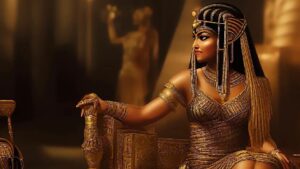Historians the world over unanimously aver that the ancient world did not possess the concept of universal human rights. Yet Adam of the ancient world, when he asked the Almighty for a companion, was certainly voicing a universal human right. When Eve told her uxorious husband to take a bite from the forbidden fruit that she already tasted, she was definitely voicing a universal human right.
The fundamental ideas of Human Rights and Liberty have existed in some form or the other ever since the creation of the world, though they may not have resembled the modern concept of human rights. Yet those fundamental ideas served as real base for the building up of the modern ideas. No individual talent can exist without the support of tradition.
An interesting folktale from Pondicherry tells in a loving manner how a villager established his human rights with God Himself. The natives of a certain village made a wooden statue of their favourite God and placed it on the bank of a river. This wide and deep river served as a borderline that separated the village from the adjacent one. A palmyra tree, cut lengthwise at the centre into two halves and placed side by side, connected the two raised banks of the river to serve as a bridge. The villagers believed that the statue at the border repelled the evil spirits, thieves, and deadly creatures from entering their homeland.
The god-fearing natives, whenever they crossed the bridge, worshipped the statue by offering coconut and betel leaves. The 15-feet tall god was extremely happy and he did his duty very well as per wishes of the people there.
One day it rained so heavily that the river began to overflow. A young man who had to reach the adjacent village on business came to the bank of the river. He was holding an umbrella made of palmyra fronds just above his head. His mind was so preoccupied with his business that he forgot all about the god standing there and went past him. The god took it as an insult, though he knew that the man was god-fearing. Yet an insult is an insult. Without a second thought, the god cursed the man.
The bridge cracked and the poor fellow who was halfway over it fell along with the broken bridge into the flooding river and were washed away. “This is what you deserve for your bad manners”, heckled the god.
A few villagers noticed the broken remains of the bridge. They postponed the idea of repairing it for fear that the flood washed it away again. They waited for the flood to subside. They were unaware of god’s handiwork. However, it so happened that on the evening of the same day a ruffian had to use the bridge. He was so strong that he could uproot a hill with ease and transfer it to the place of his choice. At the mention of his very name everyone in the village trembled. The god too was no exception, though the ruffian rarely harmed others unless provoked. That man came to the bank. How to cross the river? Where did the bridge go?
At first, he thought of swimming across the river. He had his best clothes on and so did not want to wet them. He wanted to find some other device. He lifted up his head and stared at the wooden face of god. The god shivered at his stare. Then in anger, he yelled at the god, “What use are you if you can’t protect the bridge from the flood? These poor villagers offer you food for nothing, eh? How am I to cross this overflowing river?”
An idea flit across his mind. He then moved to the back of the statue. With all his might, he pushed the huge god from behind. The wooden statue fell with a big thud, its face on the other bank of the river thus making a ‘godly bridge’. The ruffian then stepped on the newly made bridge and crossed the river. He thereby asserted his rights. The god was angry with that fellow but did not curse. He said to himself, “Let me pardon him for his action, lest he might cut me into splinters for his oven”. God too asserted his rights — Show Me The Man And I Will Show You The Rule.
As human rights can be classified in a number of ways, the most important being civil rights, we can find a cartload of folktales to substantiate this view. Folklore is a genuine form passed from mouth to ear and will continue to do so as long as men can breathe and words can express. One can study the history of any place through its folklore. The best example would be our own epic ‘Silapathigaram’ (Anklet story) through which we can read the entire history of Poompuhar, a great city submerged under the sea. We should also be aware that this epic narrated by Poet Ilango Adigal was once a folktale with the sea. We should also be aware that this epic narrated by Poet Ilango Adigal was once a folktale with the title ‘Kovilan Kannagi Kathai’.























